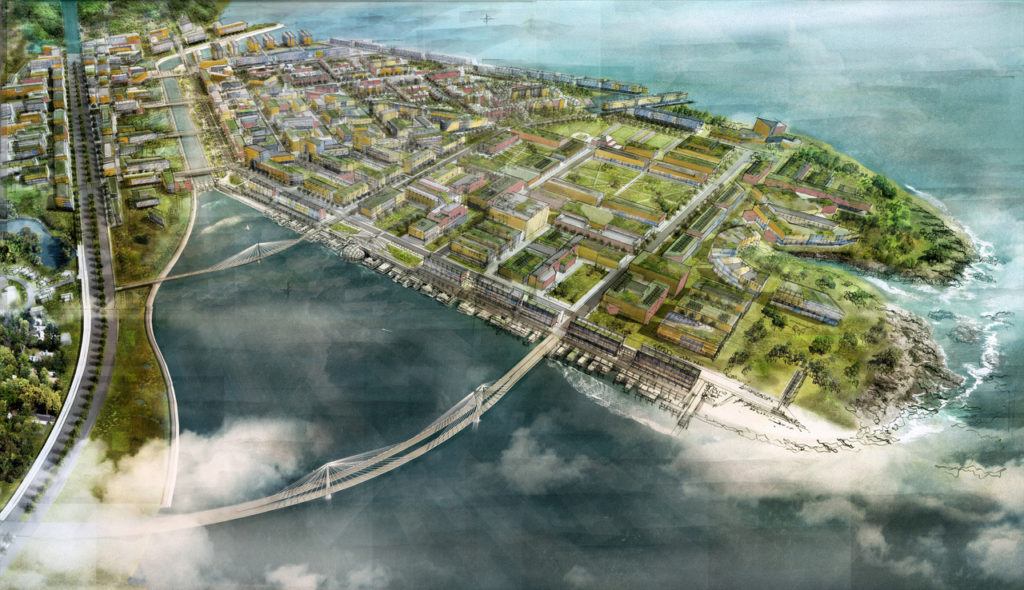
Paul Lukez Architecture’s innovative design reconnects and reuses fresh and marine water systems through restored fringing salt marshes, shellfish beds (including oyster reefs), tidal flats and pools, and eel-grass beds. Each of these natural habitats is integrated with human ones (e.g. Living Building Quads), providing comprehensive human and ecological services: primary production, food production, fish and shellfish habitat provision, biogeochemical cycling of nutrients, carbon sequestration, sediment trapping, wave attenuation, shoreline stabilization, water quality improvement, etc.
PLA proposes to harness clean energy through hydropower generation from tidal changes and storm surges in low-lying urban areas to shape economically and environmentally resilient, self-sustaining communities. The proposal offers an array of integrated landscaping, ecological restoration, urban development and financing strategies for achieving this goal. The latter include public-private partnerships for creating a new energy-producing, amenity-laden infrastructure that reduces risk to communities and investors.

This proposal would restore 232 hectares of intertidal salt marshes to store 4 million liters of water/acre, reduce tidal wave heights by 90% within 20 meters of the marsh edge, accrete sediment by 0.25 cm/m²/year, and absorb 481 tons of CO2/year. It would also restore 63 acres of oyster/mussel/clam beds as a shoreline buffer filtering 30-50 gallons of water/day/oyster for water quality improvement and sediment reduction. Other ecological benefits would include shoreline revegetation for coastal habitats, biodiversity and landscape quality, intertidal pool expansion for rocky habitats, wetland remediation, and courtyard water recycling for stormwater management.

PLA proposes cutting a channel through Columbia Point to connect the northern Old Harbor with the southern Savin Hill Cove. The new Morrissey Channel would capture rising sea levels and tidal changes and embrace the ebb and flow of natural water currents to generate hydroelectric energy through advanced turbine technologies, which would power communities and build lively public spaces. This ecologically sustainable urban model would assume a new form of resilient urbanism that generates an amenity-rich landscape, restored ecology, and an economically viable, self-sustaining community.

The Hydroelectric Canal by Paul Lukez Architecture as the overall winner and winner of the Climate, Energy & Carbon prize for its innovative approach to shaping economic and environmentally resilient self-sustaining communities. The Hydroelectric Canal addresses the complex challenge of rising sea levels. PLA together with a multidisciplinary team are working on a scheme to harness the energy from the rising tides in low lying urban areas. The communities will be able to draw clean energy through advanced hydroelectric systems, which will generate power from the tidal changes.